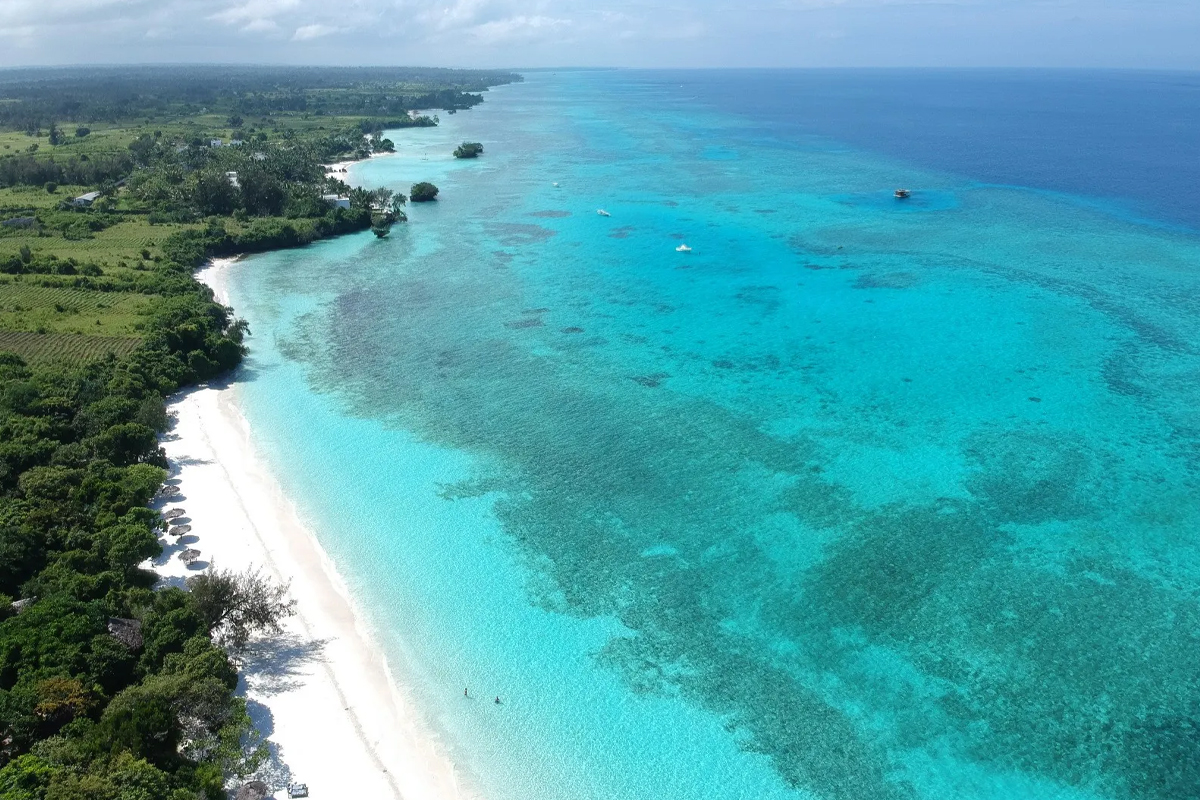Tanzania Protected Marine Areas 2024
In a bold and forward-thinking move for environmental conservation, Tanzania has declared new protected marine areas (PMAs) along its extensive coastline in 2024. This decision is part of the country’s larger effort to address the growing threats to marine ecosystems, including overfishing, habitat destruction, and climate change. By setting aside significant portions of its waters as protected areas, Tanzania is not only safeguarding its marine biodiversity but also supporting sustainable livelihoods for coastal communities that rely on these waters.
In this article, we’ll explore the details of Tanzania’s newly declared marine protected areas, the importance of these zones, and how they’re expected to play a crucial role in conserving marine life and promoting long-term environmental sustainability.
Why Marine Protected Areas (MPAs) Matter
Marine Protected Areas (MPAs) are sections of the ocean where human activity is more strictly regulated than the surrounding waters. These areas are established to conserve biodiversity, protect endangered species, and maintain healthy ecosystems. MPAs allow marine life to thrive, ensuring that fish populations remain sustainable and habitats are preserved for future generations.
Key benefits of MPAs include:
- Conserving Biodiversity: Protecting critical habitats like coral reefs, mangroves, and seagrass beds that support a wide range of marine life.
- Rebuilding Fish Stocks: By limiting fishing activities, MPAs can help overfished species recover, which in turn benefits local fishing communities.
- Combatting Climate Change: Coastal ecosystems, particularly mangroves and seagrasses, act as natural carbon sinks, absorbing large amounts of CO2 from the atmosphere.
- Supporting Coastal Communities: Healthy marine ecosystems contribute to sustainable fisheries, eco-tourism, and other livelihoods for local populations.
As Tanzania faces the mounting pressures of climate change and industrial overfishing, the creation of new MPAs in 2024 comes at a crucial time.
Tanzania’s New Marine Protected Areas: What’s Been Declared in 2024
Tanzania’s coastline, stretching over 1,400 kilometers along the Indian Ocean, is home to some of the richest and most diverse marine ecosystems in the world. From vibrant coral reefs to vast mangrove forests, these waters host a wide variety of marine species, many of which are endangered or threatened by human activities.
1. Expansion of the Pemba Channel Conservation Area
One of the major highlights of Tanzania’s 2024 conservation efforts is the expansion of the Pemba Channel Conservation Area (PCCA). Located off the coast of Pemba Island in the Zanzibar Archipelago, the Pemba Channel is a biodiversity hotspot, home to dolphins, sea turtles, and a wide range of fish species.
Why the Pemba Channel is Critical:
- Coral Reefs and Seagrass Beds: The channel’s coral reefs are among the most diverse in East Africa, and its seagrass beds serve as crucial nurseries for fish.
- Endangered Species: The area is a nesting site for green and hawksbill turtles, both of which are classified as endangered.
- Economic Benefits: The channel also supports sustainable tourism, including scuba diving and snorkeling, which contribute significantly to the local economy.
The 2024 expansion of the Pemba Channel Conservation Area increases the size of the protected zone, ensuring more habitats and species are safeguarded from unsustainable fishing and other harmful activities.
2. New Protected Zones in the Rufiji-Mafia-Kilwa Seascape
Another major focus of the new 2024 protections is the Rufiji-Mafia-Kilwa Seascape, a stretch of coastline known for its incredible biodiversity. This region is home to one of the largest populations of dugongs (sea cows) in the Western Indian Ocean and boasts rich mangrove forests and coral reefs.
Key Features of the Seascape:
- Mangrove Forests: The Rufiji Delta is one of the largest mangrove areas in East Africa, playing a vital role in carbon sequestration and protecting the coastline from erosion.
- Coral Reefs: The reefs around Mafia Island are known for their vibrant biodiversity and are a critical habitat for several fish species that support local fisheries.
- Dugong Population: The dugong, an endangered species of marine mammal, finds refuge in this seascape. Protecting this area will help ensure the survival of one of the few remaining dugong populations in the region.
3. Tanga-Pangani Marine Protection Initiatives
The northern coastline of Tanzania, near Tanga and Pangani, has also been prioritized in the 2024 initiative. This area is known for its rich marine biodiversity, but it has been heavily impacted by overfishing and unsustainable coastal development.
Importance of Tanga-Pangani Region:
- Fish Stocks: This region provides critical habitats for fish species that are key to local fishing communities.
- Coral and Sponge Habitats: The waters off Tanga and Pangani are home to unique coral and sponge species that are threatened by destructive fishing practices.
- Community-Based Conservation: Many local fishing communities are already engaged in conservation efforts, and the new protected areas aim to strengthen these initiatives by providing legal backing and resources.
How Climate Change Is Influencing Tanzania’s Marine Ecosystems
Climate change is having a profound impact on Tanzania’s marine ecosystems. Rising sea temperatures, ocean acidification, and changing weather patterns are putting coral reefs, mangroves, and seagrass beds at risk. The creation of new MPAs is seen as a way to build resilience against these challenges.
Climate Change Impacts:
- Coral Bleaching: Higher ocean temperatures cause coral bleaching, where corals expel the algae living in their tissues, turning them white and making them more susceptible to disease. This has been a growing problem in Tanzania’s coastal waters, particularly in the coral reefs around Zanzibar and Mafia Island.
- Mangrove Loss: Rising sea levels and increased storm intensity are threatening mangrove forests along the coastline. Mangroves act as a natural buffer against storms and help absorb carbon dioxide, making them crucial in the fight against climate change.
- Fisheries at Risk: As fish stocks migrate to cooler waters or are overexploited, coastal communities that depend on fishing are facing economic challenges.
By protecting key marine habitats, Tanzania’s new PMAs help to mitigate some of these climate-related impacts. Healthy coral reefs and mangroves are more resilient to climate change, and protecting these areas helps maintain biodiversity and ecosystem services that support both wildlife and human communities.
How These New Protected Marine Areas Support Local Communities
One of the key elements of Tanzania’s 2024 initiative is the integration of local communities into the management and benefits of marine protected areas. Many coastal communities in Tanzania rely on fishing, seaweed farming, and eco-tourism for their livelihoods. By establishing MPAs, Tanzania aims to create a balance between environmental conservation and economic sustainability.
1. Sustainable Fishing Practices
Overfishing has been a growing concern in Tanzania, with many fish stocks declining due to unsustainable fishing methods such as dynamite fishing and bottom trawling. The new PMAs will introduce regulations that promote sustainable fishing practices, allowing fish populations to recover while still providing livelihoods for local fishermen.
Key Strategies:
- No-take Zones: Some areas within the MPAs will be designated as “no-take zones,” where fishing is prohibited to allow marine life to recover and thrive. Over time, fish populations in these zones will spill over into surrounding areas, improving catches for local fishermen.
- Fishing Co-Management: Local fishing communities will have a say in managing the protected areas, ensuring that traditional knowledge is combined with scientific conservation efforts.
2. Promoting Eco-Tourism
With its stunning coral reefs, abundant marine life, and beautiful islands, Tanzania’s coastline is a prime location for eco-tourism. The new protected areas are expected to boost eco-tourism activities such as diving, snorkeling, and wildlife watching, generating additional income for local communities.
Tourism Benefits:
- Job Creation: Protected areas can attract tourists interested in exploring marine life, creating jobs in tourism, hospitality, and guide services.
- Conservation Funding: A portion of the revenue generated from eco-tourism can be reinvested into conservation efforts, helping to maintain the integrity of the MPAs.
3. Resilience to Climate Change
Coastal communities are particularly vulnerable to the effects of climate change, such as rising sea levels and extreme weather events. Healthy ecosystems, such as mangroves and coral reefs, act as natural barriers that protect these communities from storm surges and coastal erosion. By safeguarding these ecosystems, the new protected areas also enhance the resilience of local populations.
FAQs
Q1: What is the significance of Tanzania’s new marine protected areas?
A: These protected areas are crucial for preserving marine biodiversity, promoting sustainable fishing practices, supporting eco-tourism, and protecting coastal ecosystems from the impacts of climate change.
Q2: How will these new protected areas benefit local communities?
A: The MPAs will help rebuild fish stocks, promote eco-tourism, and enhance the resilience of coastal communities by protecting habitats like mangroves and coral reefs.
Q3: What challenges do Tanzania’s marine ecosystems face?
A: Major challenges include overfishing, habitat destruction, climate change, coral bleaching, and the loss of mangroves due to rising sea levels.
Final Thoughts on Tanzania’s New Protected Marine Areas
Tanzania’s declaration of new marine protected areas in 2024 marks a significant step toward conserving the country’s rich marine biodiversity and building resilience to climate change. By safeguarding critical habitats, promoting sustainable fishing practices, and supporting eco-tourism, these protected areas offer hope for both wildlife and the communities that rely on healthy marine ecosystems. As the effects of climate change continue to intensify, Tanzania’s proactive approach to marine conservation sets an example for other nations striving to balance environmental protection with economic development.
The future of Tanzania’s coastline is looking brighter, thanks to this groundbreaking initiative.
Plan Your Dream Safari Adventure in Tanzania!
Explore our pages for detailed information on:
- Serengeti National Park
- Tanzania Honeymoon Safari
- Tanzania Luxury Holiday
- Tanzania Travel
- Safari Packing Gear List
- Safety Guidelines
- Serengeti Great Migration
- Tarangire National Park
Visit our website to start planning your perfect getaway!













